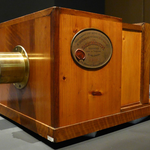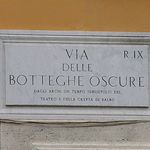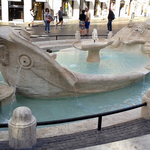Foro Romano
What for centuries was the center of the ancient public life of Rome originally appeared to be a marshy valley occupied by one of the most ancient inhabited necropolises between the ramifications of the Quirinale and Viminale hills on the north,
Palatino hill on the south, Capitolium hill on the west, the heights of the Velia hill (a kind of bridge between Palatine and Esquilino) to the west.
Numerous little water courses were crossing it one of which became the Cloacae Maxima capable of draining water since the roman times. It was built by Tarquinius Priscus and used to dry up the valley. The place got very soon frequented by the inhabitants of the surrounding hills. It served as a meetig place for the market.
The word forum, probably derives from foras, because it lies out of the living area.
After the fusion of the communities of the adjacent hills from the same city the Forum defended by the stronghold of the Capitolium formed the center of Rome around which the buildings aimed for the dispatch of the public and private affairs rose up.
During the Republic age the public character of the Forum got the upper hand of the private one. The head points of the meetings of the Senate, the Popolum, the Court, temples and honorary monuments rose up there.
The Forum reached its definitive arrangement under Ceasar and Augustus and kept the representative functions until the late antiquity.
The Forum was the place where all Romans came to. The noble Roman came here wearing a short flax shirt, wrapped up in the toga, without underpants and leaving his house sometimes of 40 rooms.
The poor Roman wears only a tunic of raw wool and he goes out of a one-room-house of insulae: there were 45 thousand dormitories with up to 5 floors which croweded the historical center of Rome.
Visiting the Forum is not only a social duty but the necessity because here it was possible to know what had happened and what would happen.
In the Forum Lollia Pollina had a walk with her infinite jewels. From rostra, a platform orated of marble adorned with the spurs of the ships captured by the Visci in 338 b.C. in Antium, the orators passed by with their "white toga", which the name of "candidate" comes from. They were the persons who asked votes for the public positions. In front of the temples the haruspices (i.m.priests) alternated. They drew auspices observing the animals' entrails sacrificed to the gods.
Under the arches people walked, fixed appointments, conspired. At the same time they went washing to 1000 public swimming pools or to Thermal Baths, then played dices or threw javelin.
The rich ones invited each other for dinner. A banquet could last from four in the afternoon until the dawn. They ate with hands, the napkin were used to take the remnants of food at home.
The northern corner of the Forum was occupied by Comizio which was the most ancient political centre of the town. The popular assemblies were held in the central square, while the Curia accepted the Senate.
In front of the Curia, under the shed there was the Lapis Niger, that means "black stone". It refers to the square area floored in black marble that came to the light during the excavations of 1899. If to go a few steps down it is possible to see an altar, a trunk of a column and a cippus with the oldest known latin inscription. It forbids in big archaic letters of 600 B.C. to violate the place which at the time was considered to be sacred because according to the legend the Romulus body was buried here.
The Basilica Emilia is the only one survived of the republican basilicas.
It was founded in 179 B.C. by censors Marcus Emilius Lepidus and Marcus Fulvius Nobiliores. It was reconstructed again in the I st century A.C. by Gens Emilia (from which comes the name of the Basilica) and destroyed by a fire during the sack of the Alaric Goths. The visible remains date to the restoration of Augustus. The Caesar's Basilica Julia situated in the opposite part was much more magnificent. The basilicas appeared to large covered halls subdivided into naves by rows of columns. During the bad season they were designed to cover all the original functions of the Forum that means to host the tribunalis (organs for settling legal controversies) and business transactions. The Christians once gone out of the secrecy selected them as a model for the cult places.
The Roman Forum is definitely the place from where it is possible to admire the Eternal City with basilicas, temples, arches, domus following one another. The Temple of Vesta of a circular form is not the last one among them according to the appearance given it by Severe Settimio during the last reconstruction: a cavity of the polio accepted the fatal objects of Rome. In the back there was a house of the Vestals. This house was a college of the virgins, keepers of the Vesta's sacred flame, that according to the tradition was founded by Numa Pompilio. Bases and statues remind the priestesses who lived here until the year 394 when Theodosius closed the temple. The Vestals pulled out in the very young age from the family
had to stay in the priesthood for thirty years keeping the virginity.
The Vestal who violated the rule had been buried alive and her lover was whipped to death.
Devasted by earthquakes and by the barbarians, in the High Middle Ages most of the ancient buildings were used as churches and fortresses. Then they were transformed in quarries of building materials while the part of the ground became a cows' field (" Campo Vaccine "). The first excavations had begun in the year 800 and from up to now they are practically uninterrupted.

 The records of Rome. Big numbers, not always enviable, for a big city.
The records of Rome. Big numbers, not always enviable, for a big city. New Phot-O-Matic section. To spend some time looking at photos (also) of Rome.
New Phot-O-Matic section. To spend some time looking at photos (also) of Rome. The administrative, urban, toponymic and imaginative subdivisions of Rome.
The administrative, urban, toponymic and imaginative subdivisions of Rome. Notice for tourists: in Rome you drink for free. Historical fountains and 'big noses'.
Notice for tourists: in Rome you drink for free. Historical fountains and 'big noses'. Free museums return on the first Sunday of the month.
Free museums return on the first Sunday of the month.